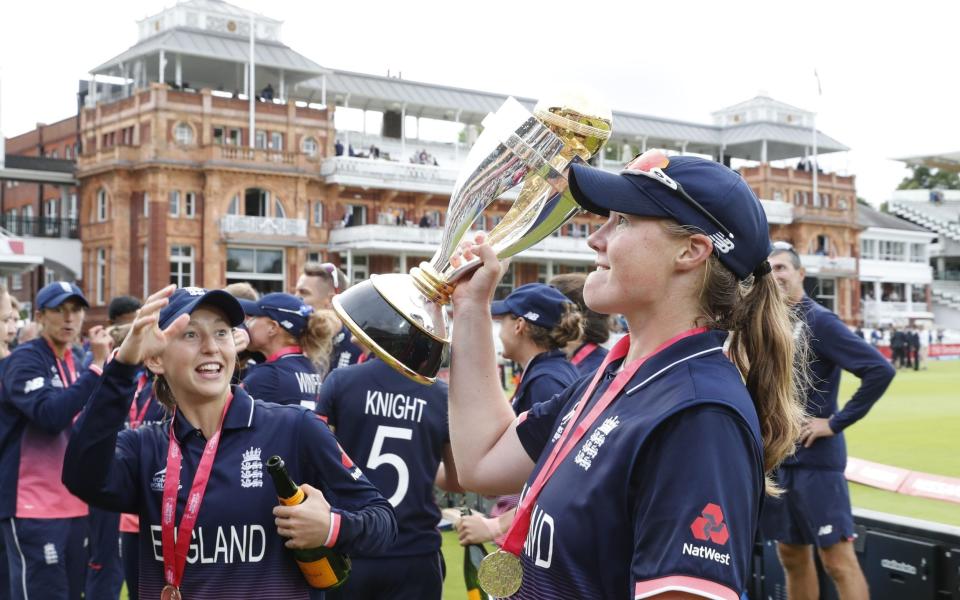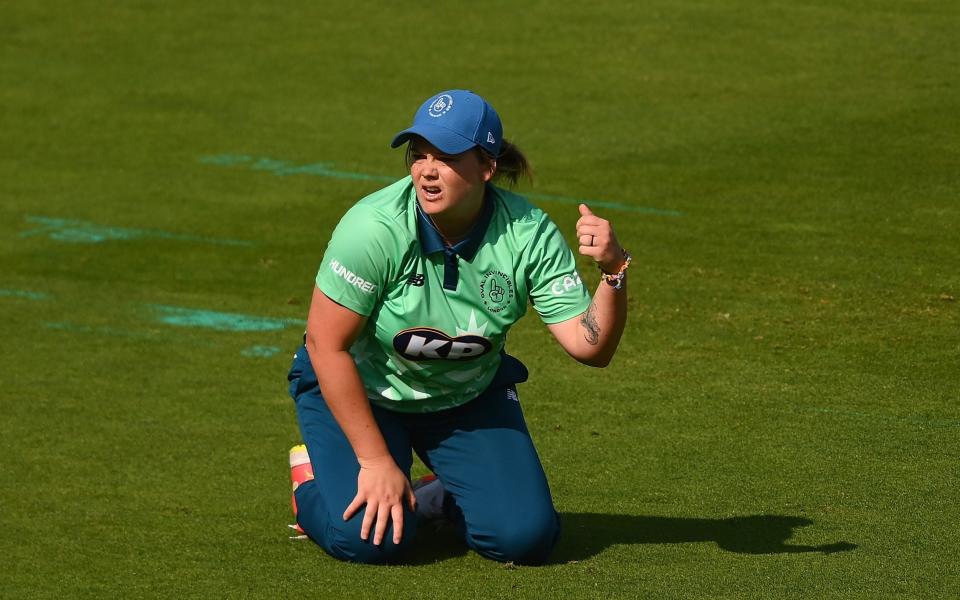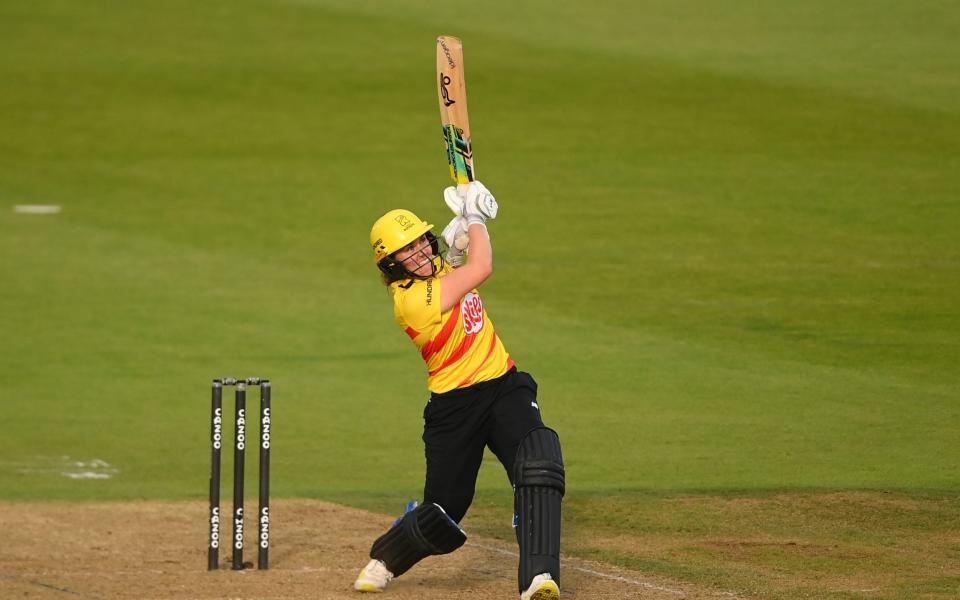England women return to Lord's – but why the five-year wait?

England’s World Cup win at Lord’s in 2017 has been described as a watershed moment for women’s cricket in this country. And it was.
It led to the Hundred, where women are playing domestic cricket on the same platform and at the same grounds as their male counterparts, with equal prize money (although not equal pay). It also led to domestic contracts, opening the door for 51 more women to play the sport full-time in England and Wales.
But, this weekend in an ODI against India, England are only just returning to Lord’s for the first time since that historic victory over the same opponents. World Cup winner Alex Hartley, however, skips the grandiose talk of progress to offer a more blunt reflection on the past five years.
“We’re further behind than I thought we would be at this point,” she says. “We only got fully professional domestic contracts in the last two years. I would have loved that to have happened a little sooner to really capitalise on everything we’d done.”
'World Cup win felt fake... it didn't feel like women's cricket'
Hartley was part of the team who lifted the trophy at Lord’s. She remembers the packed-out stands, Anya Shrubsole’s astonishing six-wicket haul, and the release of tension as England overcame India by a mere nine runs. But one of her standout memories is from the following morning.
Nursing a sore head, she went downstairs for breakfast to find the team’s faces on the front and back page of every national newspaper. “It felt fake – it didn’t feel like women’s cricket,” she says.

But progress did not materialise thereafter as quickly as she imagined. The Kia Super League helped boost the level of women’s cricket, but matches were not regularly televised and players were not full-time professionals.
Up until late 2020, there remained only 16 full-time professional contracts in women’s cricket – reserved for England internationals.
Hartley says it is “remarkable” that it has taken so long for England to return to Lord’s, too. Between 2008 and 2014, one women’s international was played there each year. A World Cup win should have only invigorated the women’s team’s claim to play at the “Home of Cricket”, but instead that 2017 final was their only appearance at Lord’s in the past eight years.
Up until this summer, the women had played only one home fixture at a men’s Test ground since that seminal day five years ago. “It’s like we’re now pushing the fact England are playing at Lord’s and it’s an incredible moment – but should it be?” Hartley says.
'You just feel part of this massive community'
There are signs that will change, as an MCC spokesperson told ESPNcricinfo in January that it was “working closely with the ECB to be able to bring international women’s cricket back to Lord’s on an annual basis”.
Lydia Greenway, who appeared in 14 Tests, 126 ODIs and 85 T20 internationals for England, is happy they are back at Lord’s, too. In 2017, she was recently retired and commentating on the final and her strongest memory remains that of the crowd. “I was at the women’s Euros final to watch the Lionesses and it felt like that day at Lord’s,” she says. “I looked around and it was like that feeling when you find your tribe. Wembley, like Lord’s, was full of female sports lovers. You just feel part of this massive community.”
Looking at the opportunities in domestic cricket now, both she and Hartley agree the women’s game is on its way to where they want it to be, with the Rachael Heyhoe Flint Trophy and the Charlotte Edwards Cup working alongside the Hundred to increase opportunities. The ECB’s restructuring to regional set-ups saw women’s academies develop, and at elite level the second season of the women’s Hundred averaged 10,400 spectators per game this year. At the Commonwealth Games in Birmingham, Edgbaston drew impressive crowds, too.
“When I look back to when I made my England debut at 17, I had nowhere near as much exposure in terms of the level of cricket that the girls are now playing,” Greenway says. “That’s why it’s so nice to see them really make the most of everything they’re getting.”
How and why the women's Hundred avoided second-season slump
While the men's competition struggled to raise bar or capture imagination, the women's version was a success
By Tim Wigmore
If second-season syndrome was inescapable in this year’s men’s Hundred, it happily eluded the women’s competition. Despite the tournament being trimmed by the Commonwealth Games, this year’s women’s Hundred could claim to have bested last year’s.
With a higher calibre of overseas players, the quality of cricket improved. Even with 10 fewer matches the salient metrics were positive, too: compared to 2021, this year’s women’s competition saw more sixes. Most importantly, more fans came to watch: 271,000 all told, an average of 10,400 per game.
Perhaps the best indication of the evolution of the Hundred came in the final: not on the pitch, but off it. For Oval Invincibles, Dane van Niekerk, the official team captain and player of the match in last year’s final, watched on from the sidelines: not because she was injured, but because she did not get into the side. Van Niekerk was a victim of a change in the rules on overseas players. As with last year, sides could only field three overseas players in their XI, but they could now contract four at a time, meaning that a once illustrious international player would now miss out.

In the Invincibles’ case it meant Van Niekerk, South Africa’s captain and a veteran of 194 internationals, only made the cut in three matches.
In the men’s competition, the Hundred’s claims about the calibre of overseas players are a little exaggerated, with the quality hollowed out by a combination of the crammed international calendar, India barring their players from appearing in overseas short-format leagues and several players leaving early to take part in the Caribbean Premier League. But in the women’s tournament, the credentials of the Hundred’s overseas players are harder to dispute. Barring Meg Lanning, who missed the tournament for personal reasons, and perhaps India’s prodigy Shafali Verma, the Hundred essentially featured all of the best two dozen non-English cricketers in the world.
“It gave coaches options,” Sanjay Patel, the managing director of the Hundred, says of allowing a fourth overseas player in the squad.
Yet the greater quality of overseas players in 2022, due to the proximity of the Commonwealth Games and the easing of Covid-19 quarantine requirements, did not mean local talent was marginalised. The share of overall runs scored by overseas players this year rose three per cent, but the share of wickets overseas players took fell by the same amount, suggesting that domestic players coped with the heightened standards. A central reason for this is at the level below the Hundred: in the regional women’s structure, there are now 51 professional contracts, taking the total number of English professional players to 67 – enough, along with three overseas players, to fill all eight Hundred sides.
“The domestic players are getting better each year because they’re now part of professional domestic structures,” says Charlotte Edwards, the former England captain who is now head coach of Southern Brave. “I’ve certainly seen a difference from last year – the fitness levels and fielding have really risen.”
Two 17-year-olds – Sophia Smale and Freya Kemp – faced off against each other in this month’s final at Lord’s. The competition also reaffirmed 18-year-old Alice Capsey’s standing as among the most exciting cricketers of her generation. While Edwards does not consider the standard of domestic talent on a par with the Big Bash – which has benefitted from Australia’s world-leading investment in the women’s game – she believes that the gap is closing.
The most dramatic moment of this year’s women’s Hundred came when Nat Sciver launched three consecutive sixes over midwicket in the eliminator, coming within one blow of clinching victory when Trent Rockets needed 22 to win from four balls. It was an extreme example of the welcome uptick in sixes this year – from one every 71 balls to one every 50. This shift could lead to an important change in the dimensions at grounds.
An altogether bigger issue, however, is how to protect the competitive balance in the women’s Hundred. Both finals have involved the same result – Oval Invincibles defeating Southern Brave in the final – while Welsh Fire have only won three of their 14 games.

Inadvertently, the contract system used in the women’s tournament might well have undermined competitive balance. Unlike with the draft used in the men’s competition, in the women’s Hundred non-centrally contracted players are free to sign for whoever they want. In practice, players have tended to want to be based at home, benefitting the sides who have the strongest pool of local players. But Patel suggests that, with domestic players paid better, it could enable a move towards a draft system to ensure talent is equitably distributed.
“The overall professionalisation of the women’s game means that some of these things which probably weren’t possible back in 2019 when we made the decisions, I think are possible,” he says. If the quality of the women’s tournament can increase, the ultimate hope is that more women’s matches might take top billing during double-headers. This year, the lone women’s match to be played after the men’s game was the tournament opener.
“Double-headers will definitely stay. That’s a good model,” Patel says. “We flipped one game – we need to review that and see what did that do? What were the results, what do we think’s best for the women’s game?” To Patel, the only certainty is that further evolution lies ahead. “The women’s game is changing – and I think we should change with it.”

 Yahoo Finance
Yahoo Finance 